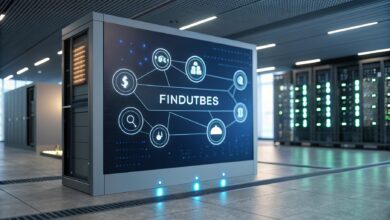JR Geo: The Future of Smart Cities and Spatial Data

JR Geo: The Future of Smart Cities and Spatial Data combines real-time location intelligence with advanced geospatial analytics to power smarter, data-driven urban systems. It enables efficient city planning, improved mobility, and sustainable infrastructure. JR Geo is transforming how cities connect people, places, and technology.
Stay tuned with us as we dive deeper into “JR Geo: The Future of Smart Cities and Spatial Data.” We’ll explore how this groundbreaking technology is transforming urban life, improving real-time decision-making, and shaping the connected cities of tomorrow.
How is JR Geo revolutionizing the way we use geospatial technology?
Imagine opening a map app that doesn’t just show you where things are—but predicts where they’ll be next. That’s the power of JR Geo, a breakthrough in geospatial technology that combines real-time tracking with deep historical data to deliver dynamic insights about the world around us.
At its core, JR Geo stands for Journaling and Real-time Geospatial Systems. It merges two vital components:
- Journaling, which records and stores historical location data to track how places and systems change over time.
- Real-time, which captures live updates from devices, satellites, and sensors to reflect what’s happening right now.
By fusing these two layers, JR Geo helps cities, industries, and even individuals make smarter, faster, and more data-driven decisions—turning maps into living, evolving intelligence systems.
What industries benefit the most from JR Geo applications?
JR Geo isn’t limited to tech companies or urban planners—it’s reshaping countless industries:
- Smart Cities: Real-time traffic monitoring, infrastructure management, and urban mobility analytics all rely on JR Geo’s continuous data streams.
- Logistics & Supply Chain: With IoT location data and predictive mapping, businesses can track shipments, optimize delivery routes, and reduce costs.
- Agriculture: Farmers use spatial data analytics to monitor soil health, crop growth, and water usage through geospatial sensors.
- Environment & Disaster Response: JR Geo aids in wildfire tracking, flood modeling, and climate prediction using geospatial data visualization.
- Retail & Marketing: Companies use location-based intelligence to analyze foot traffic and choose store sites through data-driven urban planning.
Each industry gains a clearer, smarter picture of movement, change, and opportunity—thanks to JR Geo’s ability to integrate real-time data tracking with long-term spatial understanding.
How does JR Geo improve real-time decision-making in smart cities?
Modern cities are complex systems in constant motion. JR Geo acts as the digital nervous system for urban environments by integrating data from GPS and satellite mapping, traffic sensors, and public transit feeds.
Key benefits include:
- Dynamic Traffic Control: Adjusting signals and routes based on real-time congestion data.
- Public Safety: Monitoring large gatherings or detecting unusual activity through geo-analytics platforms.
- Infrastructure Monitoring: Predicting when roads or bridges need maintenance with smart infrastructure monitoring systems.
This intelligent infrastructure doesn’t just react—it learns. Over time, JR Geo systems can predict bottlenecks, energy demand, or emergency trends, turning smart city mapping into proactive city management.
What role does artificial intelligence play in enhancing JR Geo systems?
Artificial intelligence (AI) and machine learning are the analytical engines that make JR Geo more than just a mapping tool.
AI in geospatial analysis performs several functions:
- Pattern Recognition: Detecting trends in geospatial data—for example, identifying peak traffic hours or population density shifts.
- Predictive Analytics: Using journaled data to forecast future outcomes like delivery times or flood risks.
- Anomaly Detection: Spotting deviations that could indicate problems, such as power outages or environmental hazards.
This combination of AI-powered location mapping and spatial computing enables JR Geo to “think” spatially—learning from the past, reacting to the present, and preparing for the future.
How does JR Geo help businesses make data-driven location decisions?
Businesses thrive on being in the right place at the right time. JR Geo helps them do exactly that through location intelligence.
Practical applications include:
- Site Selection: Analyzing geospatial technology data to choose profitable locations based on foot traffic, demographics, and competitor analysis.
- Customer Engagement: Using geofencing and hyper-local marketing to send real-time offers when customers are nearby.
- Operational Efficiency: Tracking delivery fleets using real-time geospatial data analysis for improved logistics and reduced fuel costs.
By combining geo-analytics platforms with AI, companies can make precise, evidence-based decisions rather than relying on guesswork—boosting both efficiency and profitability.
What are the privacy and security concerns associated with JR Geo?
Every innovation comes with responsibility, and JR Geo’s use of location data raises important ethical and privacy concerns.
- Data Sensitivity: JR Geo’s journaling feature stores detailed historical movement data, which can reveal personal habits or private locations.
- Re-identification Risks: Even anonymized data can sometimes be traced back to individuals.
- Surveillance Potential: Without strict regulation, JR Geo could be used for mass tracking by corporations or governments.
To build trust, companies implementing JR Geo must follow data protection standards, maintain transparency, and adopt privacy-by-design frameworks that give users control over their information.
How is JR Geo contributing to environmental sustainability and disaster management?
JR Geo isn’t just about technology—it’s a tool for protecting the planet. By combining geospatial intelligence with IoT sensors, it offers unprecedented visibility into environmental changes.
Applications include:
- Climate Monitoring: Tracking deforestation, glacier movement, and air quality using satellite mapping and historical journals.
- Disaster Response: Coordinating rescue efforts with real-time location analytics and digital twin technology that simulate disaster scenarios.
- Precision Agriculture: Using spatial data analytics to optimize irrigation, reduce waste, and increase yield sustainably.
In emergencies, every second counts. JR Geo delivers the data-driven clarity needed for faster, safer, and smarter responses.
What is the connection between JR Geo and digital twin technology?
A digital twin is a virtual model that mirrors the physical world in real time. JR Geo serves as the backbone of these models by providing both journaling (historical data) and real-time updates.
For example:
- Urban Planners can simulate how new construction will impact traffic or energy use.
- Engineers can model bridges and buildings to predict maintenance needs.
- Environmental Scientists can test scenarios for climate adaptation strategies.
This connection makes JR Geo a vital part of smart infrastructure monitoring and data-driven urban planning, where the digital twin becomes a living lab for innovation.
How will JR Geo shape the future of autonomous vehicles and transportation systems?
Self-driving cars and drones depend on ultra-precise, continuously updated geospatial data. JR Geo provides the real-time geospatial data analysis that autonomous systems rely on to navigate safely.
Key impacts:
- Enhanced Navigation: Combining GPS, IoT, and AI to give vehicles a 360-degree awareness of surroundings.
- Traffic Optimization: Coordinating vehicle movement through shared geospatial networks.
- Safety Improvements: Predicting obstacles, rerouting during hazards, and reducing human error.
As autonomous navigation systems become mainstream, JR Geo will serve as their invisible co-pilot—keeping transportation efficient, connected, and secure.
Why is JR Geo considered the backbone of future urban and technological development?
In an increasingly digital and interconnected world, JR Geo acts as the spatial intelligence layer that ties everything together. From smart cities to AI-driven analytics, every system that relies on “where” and “when” data draws power from JR Geo principles.
Why it matters:
- It enables data-driven urban planning and predictive mapping for sustainable growth.
- It supports innovation in spatial computing, AR, and the Internet of Things (IoT).
- It enhances collaboration between humans and machines through shared geographic context.
JR Geo isn’t just a tool—it’s the invisible infrastructure shaping how we interact with space, time, and information in the 21st century.
FAQs
1. What is JR Geo?
JR Geo is a geospatial technology framework that combines real-time and historical location data to power smart city solutions.
2. How does JR Geo help smart cities?
It enables smarter infrastructure, traffic management, and urban planning through data-driven location intelligence.
3. Is JR Geo different from traditional GIS systems?
Yes — unlike traditional GIS, JR Geo integrates real-time analytics and predictive insights for faster, smarter decision-making.
4. What industries can benefit from JR Geo?
Transportation, logistics, urban development, and environmental management all use JR Geo for improved efficiency.
5. Why is JR Geo important for the future?
JR Geo lays the foundation for intelligent cities, sustainable living, and next-generation spatial computing technologies.
Conclusion
JR Geo represents a groundbreaking step toward smarter, more connected, and sustainable cities. By combining real-time data tracking with powerful geospatial analytics, it enables planners, businesses, and governments to make faster, more informed decisions. From improving traffic flow to enhancing disaster response, JR Geo is transforming how we understand and interact with our world. Its integration with technologies like AI, IoT, and digital twins makes it the backbone of future urban innovation. However, with great power comes the responsibility to protect data privacy and ensure ethical use. As this technology continues to evolve, it will shape a future where cities think, adapt, and grow intelligently. JR Geo is not just about mapping locations — it’s about mapping possibilities. The future of smart living truly begins with JR Geo.



